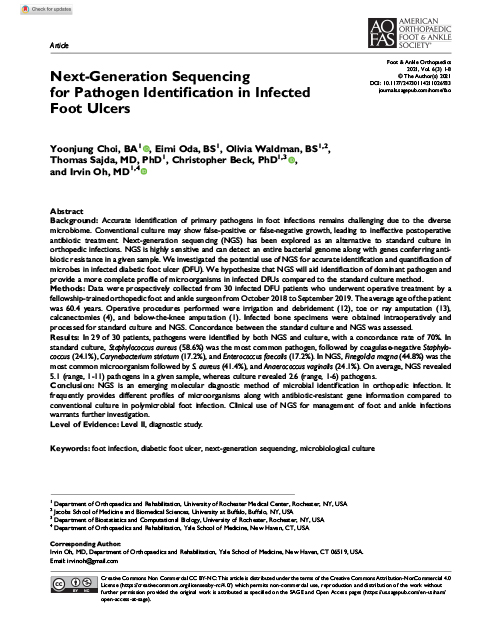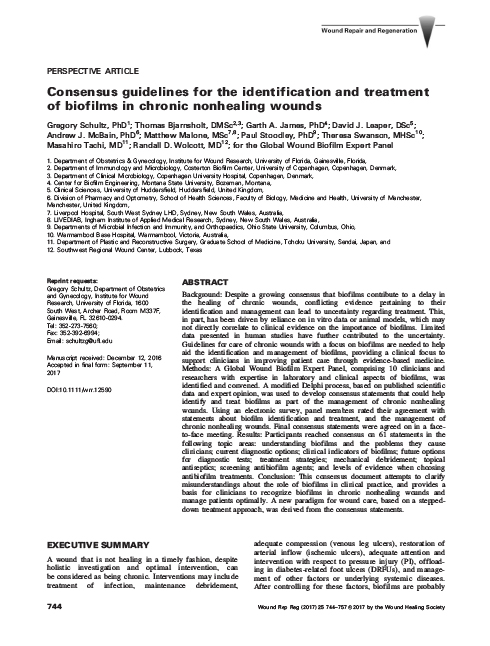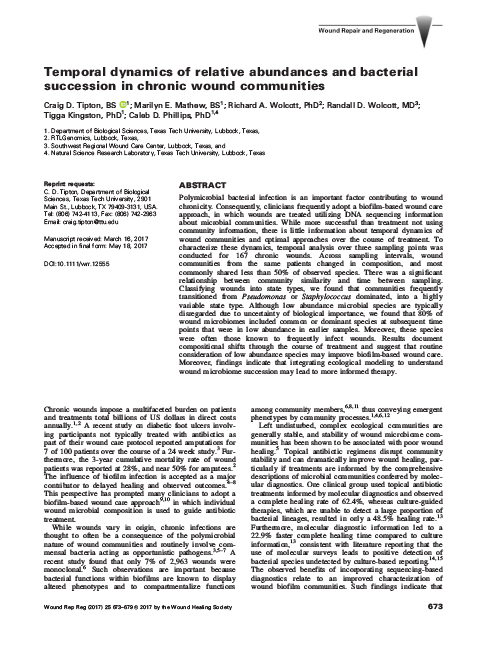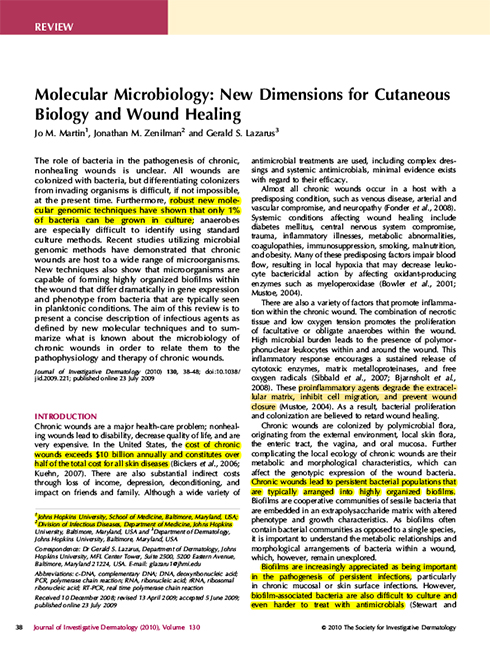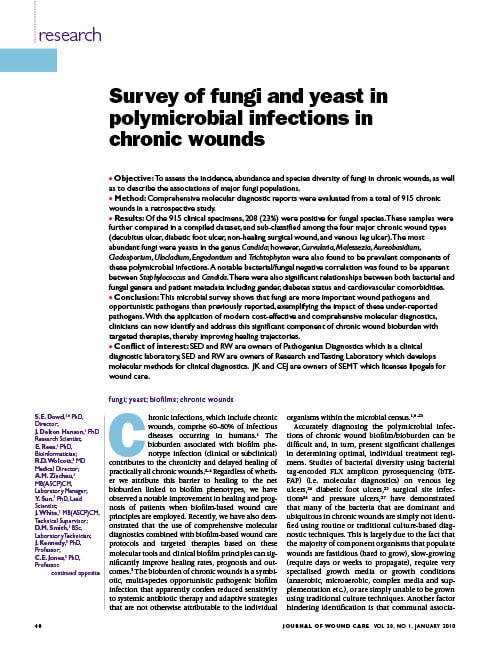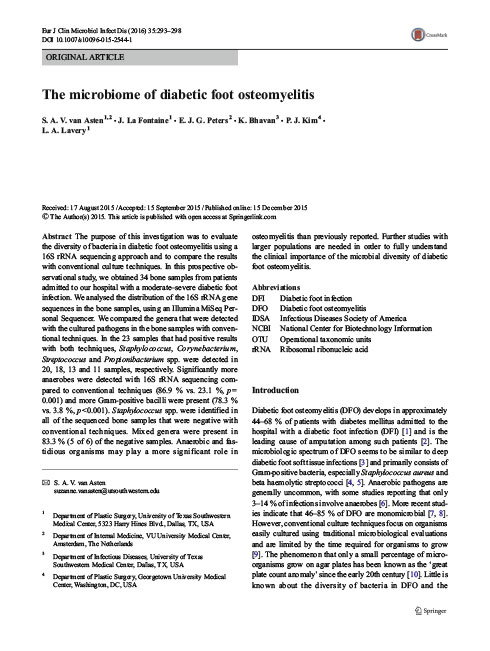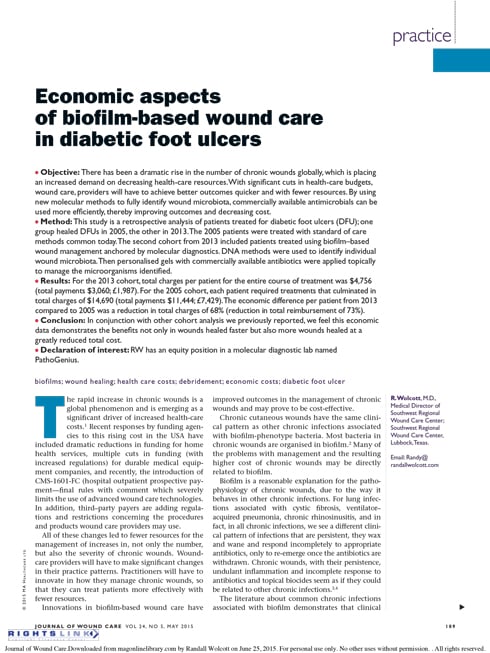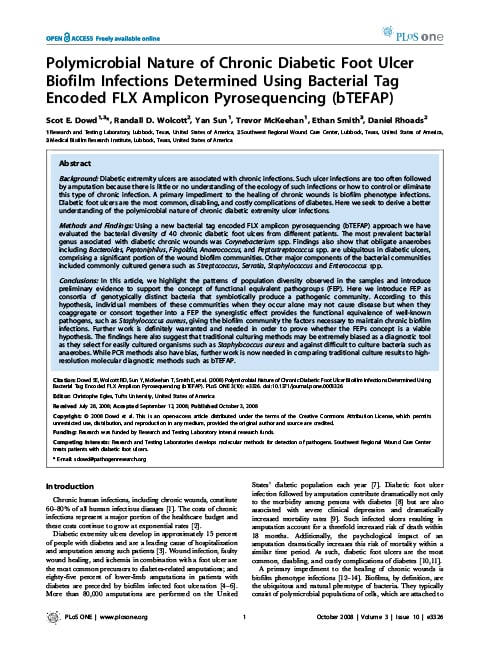- American Orthopaedic Foot & Ankle Society Research Article: Accurate identification of primary pathogens in foot infections remains challenging due to the diverse microbiome. Conventional culture may show false-positive or false-negative growth, leading to ineffective postoperative antibiotic treatment. Next-generation sequencing (NGS) has been explored as an alternative to standard culture in orthopedic infections. Read Article…
- Wound Repair and Regeneration Research Article: This consensus document attempts to clarify misunderstandings about the role of biofilms in clinical practice, and provides a basis for clinicians to recognize biofilms in chronic nonhealing wounds and manage patients optimally. A new paradigm for wound care, based on a stepped-down treatment approach, was derived from the consensus statements. Read Article…
- Wound Repair and Regeneration Research Article: Polymicrobial bacterial infection is an important factor contributing to wound chronicity. Consequently, clinicians frequently adopt a biofilm-based wound care approach, in which wounds are treated utilizing DNA sequencing information about microbial communities. Read Article…
- The Journal of investigative dermatology Research Article: The role of bacteria in the pathogenesis of chronic, nonhealing wounds is unclear. All wounds are colonized with bacteria, but differentiating colonizers from invading organisms is difficult, if not impossible, at the present time. Furthermore, robust new molecular genomic techniques have shown that only 1% of bacteria can be grown in culture; anaerobes are especially difficult to identify using standard culture methods. Read Article…
- Journal of Wound Care Retrospective Study: To assess the incidence, abundance and species diversity of fungi in chronic wounds, as well as to describe the associations of major fungi populations. Comprehensive molecular diagnostic reports were evaluated from a total of 915 chronic wounds in a retrospective study. Read Study…
- Eur J Clin Microbiol Infect Dis (2016) 35:293–298 Research Article:The purpose of this investigation was to evaluate the diversity of bacteria in diabetic foot osteomyelitis using a 16S rRNA sequencing approach and to compare the results with conventional culture techniques. In this prospective observational study, we obtained 34 bone samples from patients admitted to our hospital with a moderate–severe diabetic foot infection.We analysed the distribution of the 16S rRNA gene sequences in the bone samples, using an Illumina MiSeq Personal Sequencer. We compared the genera that were detected with the cultured pathogens in the bone samples with conventional techniques. Read […]
- Journal of Wound Care May 2015, Volume 24, Issue 5 Study: There has been a dramatic rise in the number of chronic wounds globally, which is placing an increased demand on decreasing health-care resources. With significant cuts in health-care budgets, wound care, providers will have to achieve better outcomes quicker and with fewer resources. By using new molecular methods to fully identify wound microbiota, commercially available antimicrobials can be used more efficiently, thereby improving outcomes and decreasing cost.
- PLoS One. 2008;3(10):e3326. Research Article: A new bacterial tag encoded FLX amplicon pyrosequencing (bTEFAP) approach was used to investigate the polymicrobial nature of chronic diabetic extremity ulcer infections in 40 patients. The most prevalent bacterial genus associated with diabetic chronic wounds was Corynebacterium spp. Also ubiquitous were obligate anaerobes including Bacteroides, Peptoniphilus, Fingoldia, Anaerococcus, and Peptostreptococcus spp. Other major components of the bacterial communities included commonly cultured genera such as Streptococcus, Serratia, Staphylococcus and Enterococcus spp. We introduce the concept of functional equivalent pathogroups (FEP) as consortia of genotypically distinct bacteria that symbiotically produce a pathogenic community. Together, individual members […]
MicroGenDX office and laboratory will be closed for Christmas (12/25/25). Normal office hours will resume 12/26/25.
